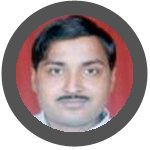Prof. D. N. Singh
D. L. Shah Chair Professor for Innovation
Department of Civil Engineering
IIT Bombay, India



RAVI RANJAN RAKESHPh. D.
|
SIMULATION OF RADIOACTIVE CONTAMINANT TRANSPORT IN UNSATURATED SOILSLow and Intermediate level radioactive waste is disposed off in different disposal modules (viz. stone lined trench, reinforced concrete trench and tile holes) of the Near Surface Disposal Facility, NSDF, after proper treatment and immobilization. These modules are located in the soil mass which remains either unsaturated or exhibits considerable seasonal fluctuation of the ground water table. In case of any eventuality, release of radionuclides from these modules may occur and may be followed by their migration through the unsaturated soils. Hence, for assessing the safety of the NSDF, prediction of radionuclide migration in the unsaturated soils becomes essential. |